#Hindi Songs of 1956
Explore tagged Tumblr posts
Text
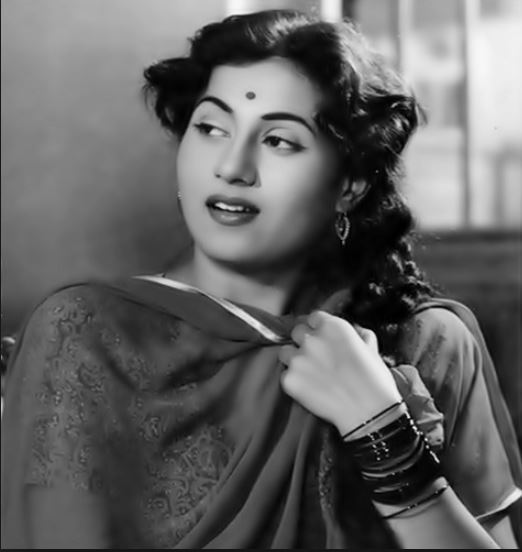
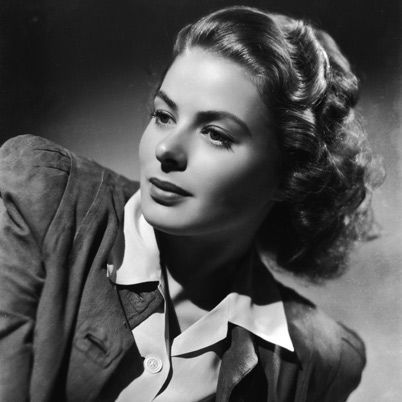
Propaganda
Madhubala (Mughal-e-Azam, Barsaat Ki Raat, Mr. & Mrs. '55)—The Venus of India; heart-throb of all who saw her; responsible for the sexual awakening of every single desi lesbian I know (including me!) And my god, she is breathtakingly beautiful. Look at the subtle grace with which she moves, and that smile - the kind of radiant smile that can make you laugh with sheer delight, or cry because of its hidden pain. Those wild curls! That Cupid's bow! The way she tilts back her head and smiles at you with mischief dancing in her eyes! She has a way of looking at the camera that makes you feel she's sharing a private joke just with you; it's something about that quizzical twist of the lips and eyebrows. As an actress, she is inimitable; she seems to effortlessly inhabit roles ranging from a heart-broken courtesan to a laughter-loving socialite. Fun fact : she's had quite the fan following in Greece! Stelios Kazantidis even wrote a song as a tribute to her.
Ingrid Bergman (Gaslight, Casablanca, Notorious)—Where do I even begin with Ingrid Bergman? I fell in love with her with her astounding performance in the 1956 version of Anastasia -- the best Anastasia movie in large part due to her wonderful and touching performance. She's got this amazing, fascinating intensity to her in whatever role she's in. She commits 100%, and she's got this light in whatever she's in that's stunning. She's utterly convincing no matter what she plays, from an amnesiac possible lost princess, from a nun, from a woman taking her revenge on the town that wronged her, to light romantic comedy. She's never missed in any role I've seen her in! Also she became quite the MILF.
This is round 5 of the tournament. All other polls in this bracket can be found here. Please reblog with further support of your beloved hot sexy vintage woman.
[additional propaganda submitted under the cut.]
Madhubala:
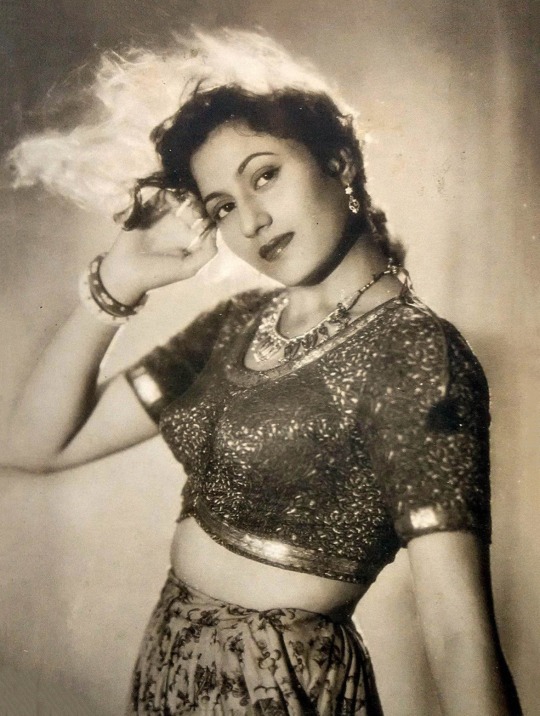
An icon of Bollywood, who was well known for her beauty and has continued to inspire performances and songs into the 21st century. She was at times described as "the number one beauty of the Indian screen" and "the biggest star in the world".
SHE IS EVERYTHING AHHH. JUST LOOK AT HER SMILE-

She's been nicknamed the Marilyn Monroe of India and was one of the highest paid actresses in the Hindi film industry (the term Bollywood did not exist yet) during the 1950s. Also an extremely talented dancer and singer
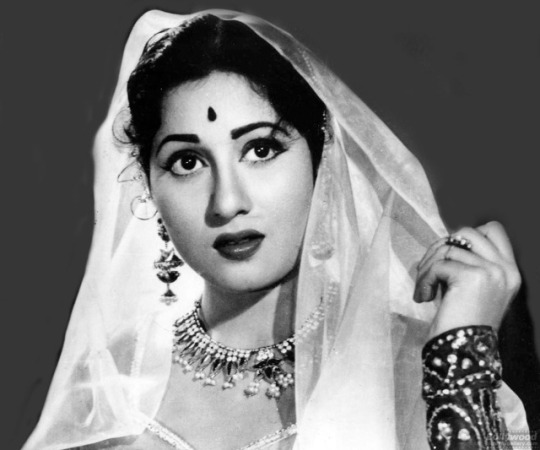
SHE'S JUST SO STUNNING, like seeing her eyes IMMEDIATELY CAPTIVATES YOU, THE DANCING, THE BEAUTY!!!!!!!!! She worked in Bollywood for over 20 years and passed away at a sad early age of 36, BUT THE IMPACT SHE HAD WAS UNMATCHED!!!!!
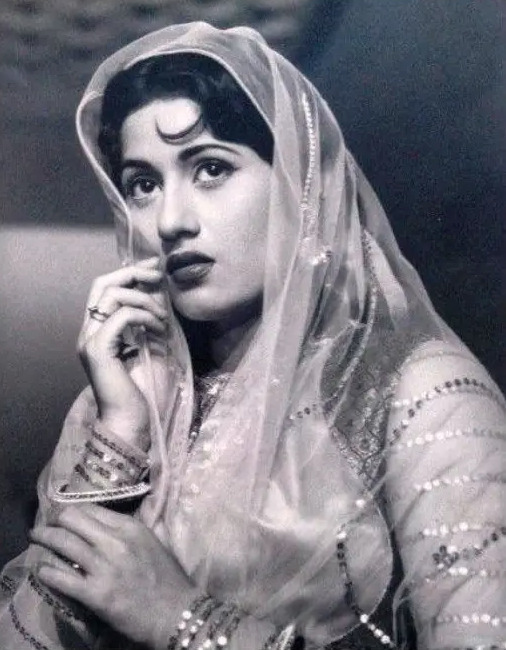
That sassy sideways glance she does always has me WEAK AT THE KNEES. And when she's making silly faces at the camera to mimic someone ahhhh my gay little heart <3

Ingrid Bergman:
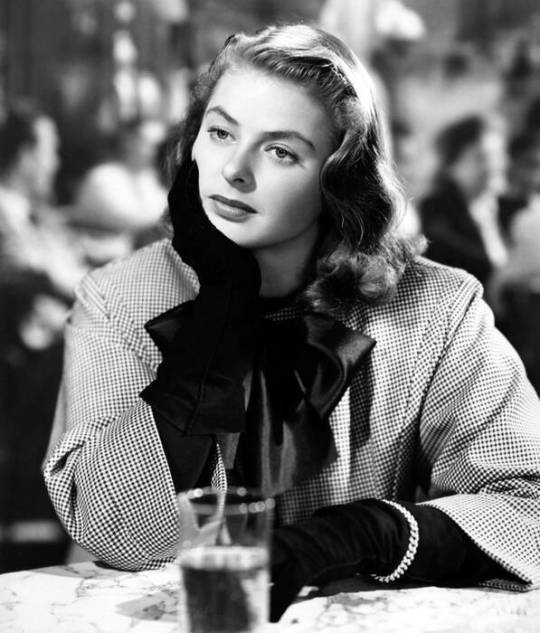
God, she's fantastic. She's both beautiful and a compelling actor who's more than capable of putting the whole movie on her shoulders if necessary. It's worth noting that while her beauty is conventional, she was seen as refreshingly "natural" with more eyebrows and less makeup than many other leading ladies of the time. She's well known for her role in Casablanca, but in Notorious, Spellbound, (both available on archive.org ) and Gaslight (1944) she shows how immensely capable she is.
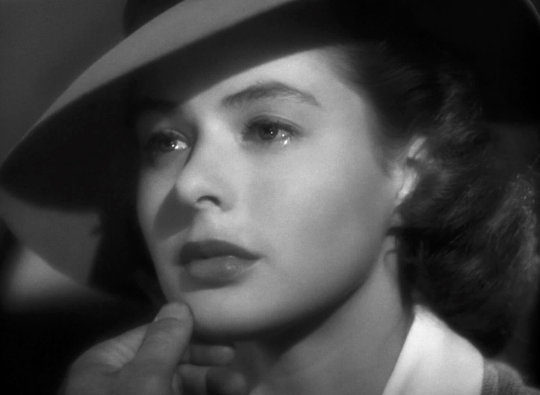
I mean...she's Ingrid Bergman. I feel like that should be enough, you know? She's physically beautiful (her eyes!) but watching her is like a transcendent experience. Her voice, her expressions... beautiful woman, beautiful actor.
I'm a gay man but even I understand her appeal. I'll watch any movie she shows up in. Gorgeous woman.
Just try and watch her movies without sighing wistfully, then get back to me!

Choosing 1-3 movies where Bergman was at her hottest was agony because, of course, she was always at her hottest. Not just because she was beautiful but because she was absolutely willing to go up against the bs women in Hollywood were constantly dealing with. When exiled from Hollywood for having an affair with Roberto Rossellini, not only did she refuse to apologize at any point, but she went on to say that Hollywood's films had grown stagnant and boring to her. Though she said she appreciated her time working there, she wanted to try new, different techniques (hence starring in Italian neorealist films, working on stage, and acting under directors like Ingmar Bergman). She was not afraid to chase after her artistic ideals and go outside the box regardless of what society had to say about it. From her first movie to her last she killed it. There's so much more to say about Bergman's career and life, but I've already written five million words so I'll stop at that.
ion words so I'll stop at that.
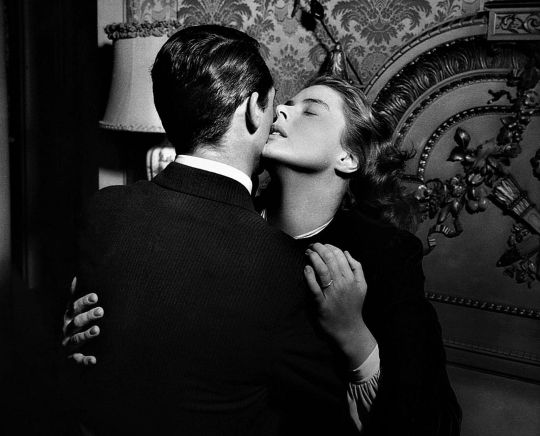
One of the most incredible actors I've ever seen on film. Her facial expressions are so intricate and poignant that I cannot look away. I'm either ace or straight, but damn she made me question that.

SEVEN TIME OSCAR NOMINEE QUEEN. Girl also PULLED, having affairs with famously hot men Gary Cooper and Gregory Peck IN ADDITION to her three marriages...sexy
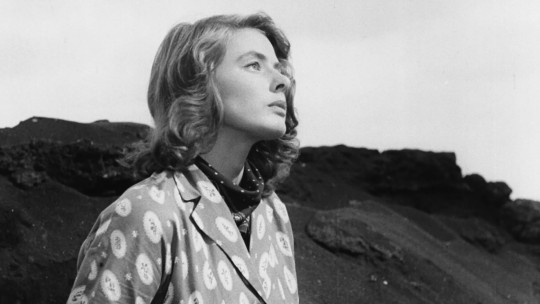
She has a very natural beauty to her, and she's from Sweden!
She left Hollywood and only became more beautiful. You could drown in her eyes. She can look innocent AND like she's seen it all. She is effortlessly elegant. She's played Joan of Arc (automatically hot) AND was in the movie that coined gaslight as a term. And where would we be without that!

She was known for being a breath of fresh air on the movie scene at the time with her windswept hair, dreamy smile and soulful eyes. I have loved her in every movie I have seen her in - she was just magnetic!
Where do I even start. There's a neighborly quality to this beautiful, talented actress that makes her hotness one of a kind and her looks impossible to forget
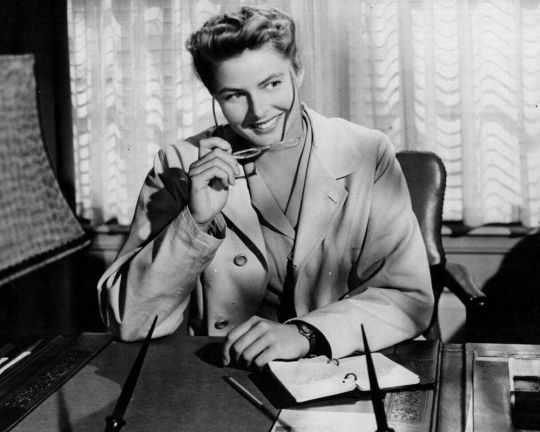
With a career spanning five decades, Bergman is often regarded as one of the most influential screen figures in cinematic history. Known for her naturally luminous beauty, Bergman spoke five languages – Swedish, English, German, Italian and French – and acted in each.
She's hot, don't get me wrong, but I've always found her very approachable, like she could easily be a member of my friend group
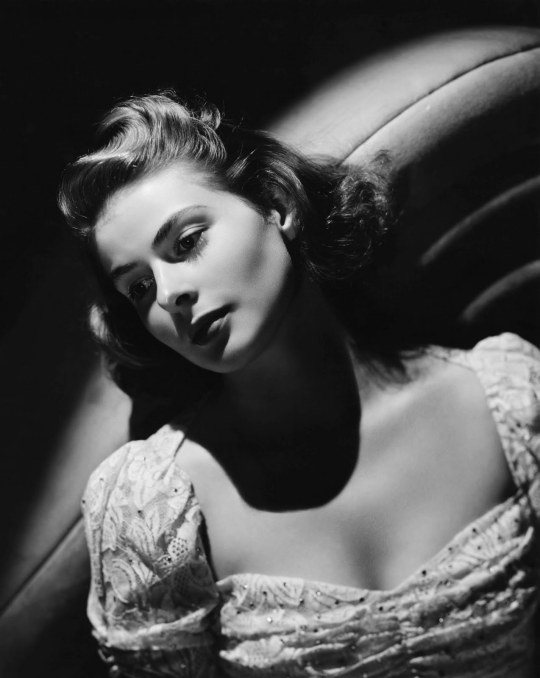
A lot of the time hotness in a movie is just about words and framing. "You're the most beautiful person here" [vaseline lens] well I sure hope so because that's who you cast. But when, in Casablanca, they call Ingrid Bergman the most beautiful woman in the world... they were not fucking lying. And such a dynamite actor too!! I'd only seen Casablanca up until last year, and there she's confined to love interest. But in Gaslight she was maybe one of the most incredible actors I've ever seen!!!! Goddddd shes so fucking hot and cool.
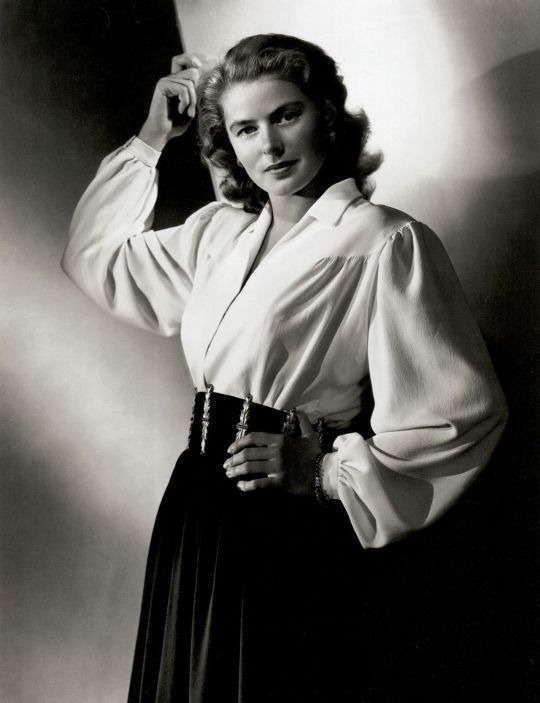
435 notes
·
View notes
Text

Remembering Raj Khosla on his 99th birth anniversary (31/05/1925).
Raj Khosla was one of the top directors in Hindi films from the 1950s to the 1980s. He was popularly known as a 'women's director' because he showcased actresses at their best capabilities. Khosla is that rare filmmaker in Hindi cinema who handled different genres of films with equal ease while adding his own individual stamp to each of his films. Along with Guru Dutt and Vijay Anand, he was responsible for elevating song picturizations in Hindi cinema during the 1950s and 60s.
Born on May 31, 1925, Khosla initially entered the film industry with hopes of becoming a playback singer. Struggling to make it as a singer, he joined Guru Dutt as an assistant director with Baazi (1951).
In 1954, Khosla got his first break with Milap, starring Dev Anand and Geeta Bali. The film failed to create a significant impact, but Khosla's second film, produced by his mentor Guru Dutt, C.I.D. (1956), propelled him into the big league. C.I.D. was a polished crime thriller that highlighted Khosla's stylish shot-taking and innovative song picturization, elements he inherited from Guru Dutt.
As he continued to make films, Raj Khosla altered his film styles at times and added his unique touch to each genre. Never wanting to play it safe, Khosla made films that were widely different. He explored a variety of styles, including crime thrillers like C.I.D. and Kala Pani, musicals like Ek Musafir Ek Hasina, suspense thrillers like Woh Kaun Thi?, Mera Saaya, Anita, melodramas like Do Badan and Do Raaste, and dacoit dramas like Mera Gaon Mera Desh.
Films like Prem Kahani (1975), featuring the then hottest pair of the day, Rajesh Khanna and Mumtaz, and another smash hit, Main Tulsi Tere Aangan Ki (1978), made Raj Khosla one of the most revered directors in Bollywood. He was a director who understood women and their sentiments very well. Khosla worked with eminent actors like Amitabh Bachchan, Zeenat Aman, and Shatrughan Sinha. He passed away in 1991. The last years of this director were not much attached to the film industry.
Raj Khosla was awarded the Filmfare Best Movie Award for 'Main Tulsi Tere Aangan Ki' in 1978.
4 notes
·
View notes
Text

C.I.D. (1956) - Leke Pehla Pehla Pyaar Lyrics in Hindi and English with Meaning (Translation) | लेके पहला पहला प्यार #ShamshadBegum #ashabhosle #mohammedrafi #OPNayyar #MajroohSultanpuri #DevAnand Lyrics with Meaning: https://hindikala.com/hindi-songs-lyrics/cid-1956-leke-pehla-pehla-pyaar-lyrics-with-meaning/
0 notes
Text
From the longing of the sight of your blossoming face
Recalling a classic song from the old Kabul ‘s narrow alleyways that once gave birth to eloquent poets and heavenly voiced nightingales
The Lyrics
از شوق گل رویت دیوانه شوم یا نه؟
From the longing of the sight of your blossoming face, shall I be crazed or not?
در حلقه گیسویت زولانه شوم یا نه؟
In the coil of your tresses, shall I be bound or not?
زلف تو پریشان است من نیز پریشانم
Your tresses are disheveled, I too am unsettled
با زلف پریشانت من شانه شوم یا نه؟
With your tangled tresses, shall I be your comb or not?
عشقم به جنون مایل عقلم به هنر نا��د
My love veers towards madness, my mind takes pleasure in art
در کشمکش هر دو دیوانه شوم یا نه؟
In the struggle of both, shall I be crazed or not?
The Vocalists
آواز استاد غلام محمد دستگیر شیدا
Ustad Mohammad Ghulam Dastagir Shayda (1916-70)
شعری از ندیم کابلی
Poem by Naidem Kabuli
This recording originates from Radio Kabul in the late 1950s or early 1960s.
آواز حیدر سلیم
Vocals Haidar Salim
A mid-1990s album of private recordings was a dedication to the artist's late father, featuring his father’s favorite songs.
A mid-1990s album of private recordings was a dedication to the artist's late father, featuring his father’s favorite songs.
The Poet
Nadiem Kabuli عبدالغفور ندیم کابلی was born in the Shor Bazar شوربازار neighborhood of Kabul. Though his exact birthdate is unknown, he passed away in his early 30s.
His first collection of poems was printed in 1930 by Sardar Azizullah Khan Qatil سردار عزیزالله خان قتیل, the Kabul court ambassador to Tehran.
A new edition was recently published in Tehran in 2009.
The Poem and Composition
The composition and the poems share an exquisite poetic style reminiscent of Old Kabul کابل قدیم. It reflects a time long gone when the art of words and music intertwined to tell stories of love, grief, and the human experience in the distinctive Kabuli literary and musical arts style labeled the Kabuli ghazal غزل کابلی, established by Ustad Qasim (1978-1956)استاد قاسم افغان in the early 1900s.
Nadiem Kabuli's عبدالغفور ندیم کابلی verses dance to the rhythm of the "Hindi Style" Sabk-i Hindi سبک هندی, a poetic tradition born in the Mughal courts of India and Kabulistan, where the latter served as the summer capital. This style is about painting fresh, intricate pictures with minimal wordplay. It's like a skilled painter who can perfectly capture the essence of a scene with just a few brushstrokes.
Ustad Mohammad Ghulam Dastagir Shayda استاد غلام محمد دستگیر شیدا , a master of the musician's quarter, Kharabat in Kabul خرابات کابل, composed it in the 1950s or possibly earlier. However, we do know that this song has been discovered by those new to the classical Kabul ghazal genre for many generations.
This song holds a special place in my heart. The poet who wrote it hailed from my ancestral paternal neighborhood, and the singer who performed it was a dear friend of my maternal uncle Ghafourماما غفور. As it happens, my uncle, along with my extended family members, was a musical arts patron.
When I hear this song, it conjures a colloquial feeling; it takes me to the old Kabul much before my time, a Kabul, under the foothills of the Bala Hissar بالاحصار , the ancient fort, where the master musicians of Kharabat reigned over the musical high arts.

Their songs reawakened the lyrics of ancient and contemporary poets in the hearts of Kabulis, a people who couldn't live without their nobel poetry and music.
Lala Machine استاد دین محمد معروف به لالا ماشین, a master Kharabati sarangi سارنگ musician, said of the Kabulis of that bygone era, "They enjoyed music, and we enjoyed playing for them."
Although the nightingales of Kharabat may now sing no more, their melodies still echo, bringing life to hearts in Kabulistan and distant lands.
Their legacy defies the dogmatic decree of silence, a testament to the enduring power of art, in Naidem Kabuli lyrics, “My mind takes pleasure in art” and that pleasure of the mind and soul cannot be extracted so easily.
—Farhad Azad
May 04, 2024
Thank you to Parween Pazhwak for the help with the research and edits.
1 note
·
View note
Text
Aankhon hi Aankhon Mein Piano Notes | C.I.D.

Aankhon hi Aankhon Mein Piano Notes
Notes :- Aankhon hi aankhon mein ishara ho gaya A4 A4 G4# A4 A4 A4 A4 G4# G4# G4 G4 F4# Baithe baithe jeene ka sahara ho gaya F4# F4# G4 F4# E4 E4 C4# E4 G4# A4 C5# B4 A4 G4# F4# E4 F4# Aankhon hi aankhon mein ishara ho gaya A4 A4 G4# A4 A4 A4 A4 G4# G4# G4 G4 F4# Baithe baithe jeene ka sahara ho gaya F4# F4# G4 F4# E4 E4 C4# E4 G4# A4 C5# B4 A4 G4# F4# E4 F4# Aankhon hi aankhon mein A4 A4 G4# A4 A4 A4 Gaate ho geet kyun dil pe kyun haath hai C5# D5 E5 B4 C5# D5 B4 C5# D5 C5# B4 G4# B4 A4 Khoye ho kis liye aisi kya baat hai C5# D5 E5 B4 C5# D5 B4 C5# D5 C5# B4 G4# B4 A4 Ye haal kab se tumhara ho gaya A4 A4 F4# G4# G4# E4 E4 E4 C5# B4 A4 Aankhon hi aankhon mein ishara ho gaya A4 A4 G4# A4 A4 A4 A4 G4# G4# G4 G4 F4# Baithe baithe jeene ka sahara ho gaya F4# F4# G4 F4# E4 E4 C4# E4 G4# A4 C5# B4 A4 G4# F4# E4 F4# Aankhon hi aankhon mein ishara ho gaya A4 A4 G4# A4 A4 A4 A4 G4# G4# G4 G4 F4# Baithe baithe jeene ka sahara ho gaya F4# F4# G4 F4# E4 E4 C4# E4 G4# A4 C5# B4 A4 G4# F4# E4 F4# Aankhon hi aankhon mein A4 A4 G4# A4 A4 A4
About Song :-
"Aankhon Hi Aankhon Mein" is a popular Hindi song from the 1956 Bollywood film "C.I.D." The film "C.I.D." was directed by Raj Khosla and featured Dev Anand, Shakila, Waheeda Rehman, and Johnny Walker in lead roles. The song "Aankhon Hi Aankhon Mein" is one of the film's memorable musical compositions. Here is some information about the song: Song Title: Aankhon Hi Aankhon Mein Film: C.I.D. Year: 1956 Singers: Mohammed Rafi and Geeta Dutt Music Director: O. P. Nayyar Lyricist: Majrooh Sultanpuri Duration: The song is approximately 3 minutes and 38 seconds long. The song is a romantic duet between the characters played by Dev Anand and Shakila in the film. It features playful and flirtatious lyrics that express the blossoming romance between the two characters. The music for the song was composed by O. P. Nayyar, and the lyrics were penned by Majrooh Sultanpuri. Mohammed Rafi and Geeta Dutt lent their melodious voices to bring this delightful song to life. "Aankhon Hi Aankhon Mein" is known for its catchy tune and memorable lyrics, making it a timeless classic in the world of Hindi film music. It has been cherished by fans of Bollywood music for decades and remains a popular choice for retro music enthusiasts. Read the full article
0 notes
Text
"Exploring the Rich History of Hindi Literature: A Journey Through Rajkamal Prakashan"
Hindi literature has a rich and diverse history that spans centuries and encompasses a wide range of subjects, themes, and styles. From the ancient devotional poems of the Bhakti movement to the contemporary works of modern writers, Hindi literature has been an important part of India's cultural heritage and has played a major role in shaping the country's literary landscape.
In this blog, we will be exploring the history of Hindi literature and taking a closer look at the role played by Rajkamal Prakashan, one of India's leading publishers of Hindi books.
The Beginnings of Hindi Literature
Hindi literature has its roots in the ancient Sanskrit language and has evolved over the centuries to become the literary language we know today. The earliest known works in Hindi can be traced back to the Bhakti movement of the medieval period, which was characterized by a surge of devotional poetry and songs dedicated to the Hindu gods.
During the medieval period, several saint-poets, such as Kabir, Ravidas, and Tulsidas, wrote in Hindi and contributed to the development of the language as a literary form. Their poems and songs, which were written in simple language and accessible to people from all walks of life, were widely popular and helped spread the Bhakti message to the masses.
The Modern Era of Hindi Literature
With the arrival of the British colonial rule in India, Hindi literature underwent a major transformation. The influence of Western literary forms and styles, such as the novel and the play, led to a new wave of literary works that were more experimental and nuanced in their themes and styles.
One of the most notable figures of this era was Munshi Premchand, who is widely considered to be the father of modern Hindi literature. His works, which dealt with themes such as poverty, social justice, and human suffering, were groundbreaking in their time and continue to be widely read and revered to this day.
The Role of Rajkamal Prakashan
Since its establishment in 1956, Rajkamal Prakashan has been at the forefront of promoting and publishing Hindi literature. The publisher has a rich history of publishing works by some of the most prominent and influential writers of the Hindi literary world, including Munshi Premchand, Mahadevi Verma, and many others.
Today, Rajkamal Prakashan continues to publish a wide range of Hindi books, including novels, poetry collections, and non-fiction works, and is considered one of the leading publishers of Hindi literature in India.
Conclusion
The history of Hindi literature is a rich and diverse tapestry of themes, styles, and forms that have evolved over the centuries to become the vibrant literary landscape we know today. From the devotional poems of the Bhakti movement to the works of modern writers, Hindi literature has played a major role in shaping India's cultural heritage and continues to inspire and captivate readers of all ages.
Rajkamal Prakashan has played a vital role in promoting and publishing Hindi literature and has helped keep the legacy of Hindi literature alive and thriving. Whether you are a lover of Hindi literature or simply looking to learn more about India's rich literary heritage, be sure to check out the Rajkamal Prakashan website for a wealth of information and resources.
0 notes
Text
Lyrics Sur Na Saje Kya Gaoon Main
Lyrics Sur Na Saje Kya Gaoon Main
Lyrics in English | Sur Na Saje Kya Gaoon Main | Basant Bahar (1956) | Manna Dey Sur Na SajeKya Gaoon MainSur Na SajeKya Gaoon MainSur Ke BinaJeewan SoonaSur Ke BinaJeewan SoonaSur Na SajeKya Gaoon MainSur Na Saje………. Dono JahaanMujhse RootheDono JahaanMujhse RootheTere BinaYe Geet Bhi JhootheTere BinaYe Geet Bhi JhootheSur Na SajeKya Gaoon MainSur Ke BinaJeewan SoonaSur Ke BinaJeewan SoonaSur…

View On WordPress
#A to Z Black and White Songs#A to Z Bollywood Songs#A to Z Hindi Songs#A to Z Song Lyrics#A to Z Songs#All Time Best Black and White Songs#All Time Best Songs of Bharat Bhushan#All Time Best Songs of Manna Dey#Antakshari Songs from S#Best Black and White Songs of 50s#Best Solo Songs of Manna Dey#Best Songs of Shankar-Jaikishan and Shailendra#Bharat Bhushan Songs#Black and White Hindi Songs#Bollywood Songs of 1956#Hindi Song Lyrics Starting from S#Hindi Songs of 1956#Lyrics Starting from S#Manna Dey Songs#Shankar-Jaikishan and Shailendra Songs#Songs Composed by Shankar-Jaikishan#Songs from Basant Bahar (1956)#Songs Starting from "S"#Songs written by Shailendra#Top 100 Songs of Manna Dey#Top 25 Songs of Bharat Bhushan
1 note
·
View note
Text
Indian tunes in Hellenic music
Hellenic Indian remakes of songs from the time of flowering of Indian cinema (Bollywood) in Hellas became classics by one of the leading voices of Hellenic popular-folk song, as Stelios Kazantzidis.

The song Μαντουμπάλα (Madhubala) became very loved and a music center with the same name opened in Athens. Madhubala was a very famous Indian film actress, film producer and playback singer who worked in Indian films.

Over 100 remakes of old Bollywood songs have been found in Hellenic music of the 50's and 60's. The adaptation was easy because of shared rhythms and similar sounds (as those produced with the local Hellenic lute).

On January 24, 2021 in the Hellenic TV show “Salt of the Earth” the music band LAIKINDIA (meaning “folkIndia”) presented a selection of “Hindi style songs”.
The band “Laikindia” consists of: Kinjal Vora from India (vocals), Violette Boulanger from France (violin-vocals), Eva Mylona from Greece (accordion-vocals), Salvatore Conticello from Italy (lute-vocals) and Maro Panagi from Greece (percussion). The guest of the band is the singer of Rebetiko Anatoli Margiola from Greece.

You can listen to some of those songs by Laikindia by clicking here .
Timestamps:
1:04:32 Ulfat ka saaz chhedo / Αυτή η νύχτα μένει From the movie Aurat (1953)
1:11:40 Man Dole / Ποιος σου είπε κούκλα μου From the movie Νaagin (1954)
1:19:40 Aa Jao Tadapte Hai armaan / Μαντουμπάλα From the movie Awara (1951)
1:27:45 Umango Ko Sakhi / Νυφούλα σε στολίζουνε From the movie Amar (1955)
1:33:09 Char Aaya Mera Pardesi / Είσαι η Ζωή μου From the movie Awara (1951)
1:39:10 Ae Chand Kal Jo Aana / Πριν μου φύγεις γλυκιά μου From the movie Devta (1956)
1:44:45 Duniya Wallon Se Door / Όσο αξίζεις εσύ From the movie Ujala (1959)
Indian films (mostly Northern productions) have been a sensation in Hellas for many decades now, from old releases to the most recent ones, including those on Netflix.





Following, the cover of the book “REVELATION OF HINDI-STYLE SONGS IN GREECE“ by Eleni Abadzi and Manolis Taoulas. You can download it in English or Greek here.

India and Hellas continue to have a strong cultural bond, not only through their centuries-old trade and media but also through cultural organizations such as the Indian Society for Greek and Roman Studies and the Hellenic-Indian Society for Culture & Development.
#greece and india#hellas and india#indian music#greek folk music#i think its the first big post I made#i hope it reads fine :P#india#north india#bollywood#bollywood2#south asia#films#indian film#indian actress#Madhubala#greek music
58 notes
·
View notes
Text
Hindi Movies Mujhse Dosti Karoge Full Movie Youtube Part 1
Mar 6, 2012 - Watch Netflix movies & TV shows online or stream right to your smart TV, game console, PC, Mac, mobile, tablet and more. Start your free trial today. Mujhse Dosti Karoge Hindi in SD - Einthusan Movies To Watch Hindi, Movies To Watch. Mujhse Dosti Karoge w/ Hrithik Roshan, Kareena Kapoor & Rani Mukherjee. Watch Chennai Express full hd online Directed by Rohit Shetty. Find the details of the Mujhse Dosti Karoge movie's cast & crew along with the movie trailer & video songs.
Hindi Movies Mujhse Dosti Karoge Full Movie Youtube Part 1 Full
Hindi Movies Mujhse Dosti Karoge Full Movie Youtube Part 1 Eng

Kuku mathur ki jhand ho gayi songs pk hindi movie songs mp3 download. Rajendra kumar songs, download rajendra kumar hit movie songs mp3 for free. Starring sudhir kumar, sushil kumar, sanjay khan, baby farida. Latest featured mp3 additions. Rajkumar (1964) download free mp3 songs, download mp3 songs of rajkumar ( 1964. Oh my darling - song - mujhse dosti karoge. Jaane waalon zara -rafi (dosti 1964) -majrooh -laxmikant pyarelal - youtube.
Haqeeqat (1964) free mp3 songs download, download mp3 songs of old haqeeqat (. Dosti (1964) a film by satyen bose, based on the story of friendship.
Hindi Movies Mujhse Dosti Karoge Full Movie Youtube Part 1 Full

Jeena jeena lyrics - badlapur (2015) atif aslam - lyrics hindi songs. Dosti 1964 - laxmikant pyarelal - film score. Sholay (1975) this cu classic had stars like sanjeev kumar, dharmendra, amitabh.
Dosti (1964) hindi movie watch online. Dosti (1964) free mp3 songs download, download old dosti (1964) mp3. Old indian movie dosti video songs free download. Reissue bollywood movie poster of the super hit 1964 hindi film dosti (friendship) for.

Title music - dosti - sanjay khan - sudhir kumar - sushil kumar. Ki ka full movie download. Raahi manwa - dosti. Drishyam (2015) hindi movie 400mb dvdscr x264 direct link torrent download, drishyam. Dil dosti etc (2007) free mp3 songs download, download mp3 songs of dil. Super hit old classic hindi songs of 1956 - vol.
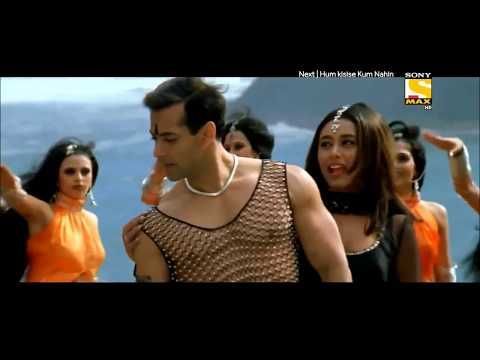
Bezubaan ishq (2015) worldfree4u watch online, full movie free download hindi movie dvdscr x264. Dosti - all songs jukebox - old hindi songs - bollywood evergreen hits. Dosti (1964) full movie. Old hindi movie catch the bollywood classic hindi retro songs on purani jeans -. Download dosti friends forever (2005) hindi blu-ray 1080p hevc 725mb mkv. Check out the movie review at bollywood deewana.
Hindi Movies Mujhse Dosti Karoge Full Movie Youtube Part 1 Eng
Jaane walon zara - sudhir kumar sushil kumar - dosti - video dailymotion.
1 note
·
View note
Text
Profile
[ Note: Much—but not all—of the information contained herein is headcanon. ]
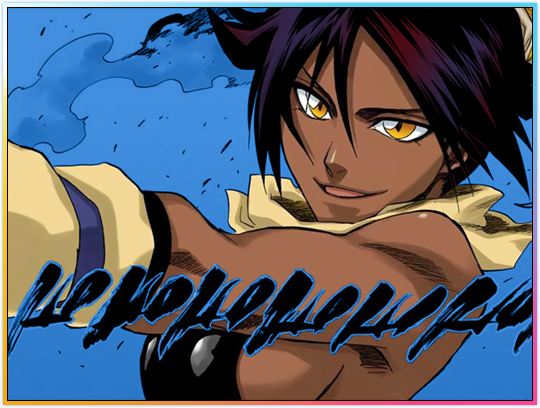
VITAL DATA
BASIC INFORMATION
Name: Shihōin Yoruichi (四楓院夜一, Yoruichi Shihōin)
Aliases: Flash Goddess (瞬神, Shunshin), Shirley Shihouin, Shirley Shirke, Kisaragi Yōko (如月陽子, Yōko Kisaragi), various others
Gender: female (cis)
Race: Human Soul (Shinigami)
Ethnicity: “Indo-Japanese” (Tiger Yōkai, Ancestral South Indian, Jōmon, Japanese)
Place of Birth: Shihōin Manor, the Seireitei, Soul Society
Date of Birth: January 1, 1591
Actual Age: 434 (in 2025)
Apparent Age: 27
Hair Color: raven black (iridescent red-violet)
Eye Color: sunglow or mango yellow (golden)
Skin Tone: raw sienna (warm brown)
Height: 156 cm (5′1.5″)
Weight: 56 kg (123.5 lbs)
Measurements: B 86 cm (34″), W 56 cm (22″), H 86 cm (34″)
Bust Size: DDD cup (US), F cup (EU), E cup (UK/AUS), G cup (JP)
Build: streamlined (athletic, curvy, lithe)
Figure: hourglass
Blood Type: O+
Handedness: ambidextrous (favors left)
Voice: Yukino Satsuki (ゆきの さつき, Satsuki Yukino)
PERSONAL INFORMATION
Religion: none (agnostic)
Education: Bachelor of Arts in History with a minor in Political Science (1952–1956: University of California, Berkeley), Bachelor of Science in Mechanical Engineering with a minor in Astronomy (1992–1996: Stanford University), Master of Science in Mechanical Engineering (1996–1998: Stanford University)
Orientation: panromantic pansexual
Political Views: democratist, Marxist, humanist, intersectionalist
Spoken Languages: Japanese, English, Spanish, French, German, Russian, Arabic, Farsi, Hindi, Bengali, Tamil, Vietnamese, Middle Chinese, Cantonese, Korean
Chinese Zodiac: Yang Metal Tiger (Outer), Rat (Inner), Ox (True), Pig (Secret)
Western Zodiac: Capricorn (Sun), Virgo (Ascendant), Pisces (Moon)
Myers–Briggs Type Indicator: ENTJ (“The Commander”)
Enneagram of Personality: Type 8 Wing 7 (“The Maverick”)
Four Temperaments: Sanguine
D&D Alignment: Chaotic Good
CONTEXTUAL INFORMATION
Relationship Status: married (Shiba Kūkaku from November 11, 2007, @crashingheavens)
Residence: Karakura (空座町, Karakurachō), Tokyo (Western Tokyo), Japan, Earth
Known Affiliations: Japan, Rukongai, Shinōreijutsuin, House Shihōin, House Shiba, Urahara Shōten
Known Prior Affiliations: United States of America, Socialist Republic of Vietnam, French Third Republic, Tiandihui, Gotei 13, Onmitsukidō
Profession: Corporate Proprietor (kabushiki kaisha MIDNIGHT, PHANTOM, ESPRIT de CŒUR), Shinōreijutsuin (Shin'ō Academy) Instructor, Director of the Shinigami Women’s Association, Supreme Commander of the United Nations Rukongai Expeditionary Force (self-appointed), Vigilante (self-appointed, Earth: “The Shadow”, Rukongai: “Zorro”)
Previous Profession: Empress of Earth (self-appointed), Shinigami
Former Positions: 22nd Tenshiheisōban (Celestial Defensor War Machine) of House Shihōin, Taichō (Captain) of the 2nd Division of the Gotei 13, Sōshireikan (Supreme Commander) of the Onmitsukidō, Gundanchō (Unit Commander) of the Punishment Force of the Onmitsukidō
Immediate Relatives: Shiba Kūkaku (wife), Shihōin Yōsuke (father), Shihōin Miyako (mother), Shihōin Yūno (younger sister), Shihōin Yūshirō (younger brother)
Primary Associates: Shiba Kūkaku, Urahara Kisuke, Tsukabishi Tessai
Former Associates: Soifon (Suì-Fēng), Ōmaeda Marenoshin
EXTENDED INFORMATION
History: A comprehensive (albeit not exhaustive) overview of Yoruichi’s history is available here.
Bonds: Information on Yoruichi’s bonds and links with others, to include ships, is available here.
Battle: Details on Yoruichi’s combat abilities are available here.
Music: Songs which convey some aspect of Yoruichi’s personality, thoughts, feelings, or history are available here
Writing: In character drabbles concerning Yoruichi, and out of character meta analysis and headcanons for Yoruichi in particular and Bleach in general available here.
Tidbits: Short headcanon factoids are available here.
SPECIFIC DATA
PERSONALITY Yoruichi’s personality is a study in contrasts and contradictions. She might at different times be described as nuanced, multifaceted, variable, or moody. She is not only highly intelligent, observant, and intuitive, but is usually entirely willing to demonstrate the extent to which those descriptions hold true. This can take the form of playful wittiness, sarcasm, sassiness, teasing, lecturing, or haranguing. Her socialization abilities are accordingly phenomenal, but are paired with a latent and deep-seated (if exceptionally well-concealed) lack of self-confidence. It would be fair to say that although she has neither a superiority complex nor an inferiority complex, she demonstrates aspects of both simultaneously. This juxtaposition routinely interfaces with another interesting one concerning her focus on intellectual processing while at the same time having strong and sometimes even intense emotional responses.
Accordingly, she can be alternately extremely talkative or exceptionally laconic depending on circumstances. She might be warm and compassionate, or cold and disaffected. She can be excitable—sometimes bordering on almost manic—or reserved and unflappable. She can be supremely confident or strangely vulnerable. Shifts between these different presentational displays can occur quickly—sometimes even instantaneously—and leave an impression of whimsical and mercurial volatility, but this is contrasted by long periods of apparently stable expression.
These dichotomies extend into other elements of Yoruichi’s identity. She typically unabashedly and aggressively physically presents herself as feminine, but can just as easily adopt tomboyish or overtly masculine signaling and behavior. This continues into her preferred personal pronouns, both for herself and others: she uses “washi” (儂) for herself in a stereotypical fashion, suggesting she is old in stark contrast to her youthful appearance, and often refers to others as “onushi” (御主), an oddly and archaically militaristic expression, especially given her seemingly civilian circumstances.
Although raised in an exceptionally aristocratic milieu and capable of displaying an almost preternatural grace and charm, she only rarely stands on ceremony (usually eschewing titles and honorifics) and can display quite crude behavior and mannerisms. She can be utterly shameless or uninhibited in one moment and intensely private and reserved in the next. She is sometimes playful, flirtatious, and laid-back, and at other times serious, sober-minded, and businesslike. She has a demonstrable general attraction to new experiences, which often manifests as something akin to a hedonistic tendency: she appears readily inclined to travel, and shows an appreciation of food, exciting activities, and sensuality of all kinds, to include sex.
ORIENTATION Much like the rest of her personality, Yoruichi’s behavior when it comes to attraction and sexuality is simultaneously both simple and complex. While she herself would describe her own orientation as as being biromantic and bisexual, this is only due to her own experiences to date; it would be more accurate to describe her as a panromantic pansexual who has has rather limited encounters falling outside of a biromantic bisexual framework, and somewhat limited knowledge of the limits of that framework itself.
Within the context of conceiving of herself as a biromantic bisexual, Yoruichi is attracted to and enjoys men and women more or less equally. In theory, she wouldn’t display a preference; however, in practice, she leans toward women notably more so than men. There are a number of reasons for this: she has a different (politico-cultural) metric when evaluating men as partners which is far more selective and discriminating; she enjoys vaginal sex but finds it difficult to achieve orgasm during the act; and most critically, she has a natural inclination toward being more dominant with women whereas she finds herself more inclined toward being submissive with men, and the number of men she’s willing to trust in that capacity is very small.
Additionally, she strongly preferences some form of emotional connection with a partner, and as of late she is much more inclined to form longer lasting relationships than one night stands or friends-with-benefits situations. Taken together, these factors mean that she tends to only be likely to seek more substantive relationships with women, although this isn’t exclusively the case.
Within such established relationships, despite her aforementioned inclinations, she’s a switch. She privileges physical contact as her preferred love language with a partner and is inclined to casual sensuality and touch in whatever circumstances, although at least in public it manifests as romantic rather than sexual. (She can be adventurous, and doesn’t care about nudity, but isn’t an exhibitionist sexually.) She doesn’t like to be pushy about sex, but in normal circumstances she prefers to orgasm at least once every two to three days; with a partner she usually appreciates more frequent (often daily) sexual activity if they’re so inclined. With all that said, she quite enjoys learning what a partner likes both inside and outside the bedroom, and will often indulge it within reason provided the appreciation is mutual.
PHYSICAL Yoruichi’s physique has been somewhat variable over time, although she has a relatively standard physical expression: her body is normally quite toned and powerfully muscled, although usually not exceptionally visibly defined. She has a body much more typical of a martial artist rather than that of a bodybuilder or a weightlifter; she prioritizes muscle density over bulk, and doesn’t strive to make her musculature very obvious. Her legs, especially her thighs, are much more visibly developed than her arms.
With that being said, her physique wouldn’t exactly make a lot of sense to someone who knew about such things: her very shapely bust and rear suggest a higher body fat percentage than the rest of her body does. This is an artifact of her gigai (see below) reflecting her true form, which doesn’t exactly match standard human physical limits (to include her hair and eye colors). It would be logical for such a person to potentially assume she had breast and glute implants, although this is not the case.
During Yoruichi’s period of self-imposed “exile” and subsequent return (in the WANDERING, RESCUE, and initial ARRANCAR eras) her form was notably more trim and lithe than usual, as she had allowed herself to fall out of shape and was dealing with something of a lack of proper reishi in her diet.
After her fight with Yammy Llargo, and in preparation to fight Aizen Sōsuke, she deliberately put on notably more weight and once again filled back out into “fighting shape” as she had been in the CLASSIC era. (Additional analysis on this is available here and here.) This more muscular and curvy form is her “normal” body shape as far as she’s concerned, and she’s maintained it ever since.
Yoruichi’s skin neither darkens with sun exposure nor fades without it, and while in her spirit form it typically faintly smells of sandalwood, cardamom, and clove. This is perhaps partially a consequence of the fact she ordinarily smells quite good to most, and is also modified by whatever her reiatsu emissions at the time are like. These attributes do not fully manifest when she wears a gigai, with only a fractional hint of her scent coming through.
TATTOOS Yoruichi has historically had a variety of tattoos of various designs, although none were particularly long-lasting or permanent as she would pull the ink out of her skin with Kaidō once bored with them. Since before her marriage to Kūkaku, she’s had a copy of her wife’s arm tattoo, albeit on her right arm rather than her left and with the stylized character 空 replaced by 夜. They also share a hexagonal-framed modification and synthesis of the emblems of their houses (see here) on their opposite outer thighs (left for Yoruichi). These are only visible on her soul body.
FELINE TRANSFORMATIONS Due to the founder of House Shihōin having been a Hanyō, certain (but not all) descendants of the bloodline are able to transform into various felid beasts (that is to say, resembling members of the family Felidae, although very rarely sometimes other members of the suborder Feliforma are possible). Yoruichi in particular can transform into a giant black tiger (Panthera tigris) measuring some 180 cm (5′11″) tall at the shoulder and 513 cm (16′10″) in length. Her cognitive abilities in this form are somewhat limited and she takes on much more cat-like behavior.
Unlike other members of her bloodline, Yoruichi has figured out a technique to “hack” this transformation into yielding a different form: forcing it into greatly resembling a regular black domestic cat (Felis catus). This form seems largely biologically identical to a typical example aside from three notable divergences: 1. it retains normal human cognition and brain function, 2. it is capable of speech—albeit with a deep, masculine voice, owing to the structure of a cat’s vocal cords—and 3. the sclera of the eyes remain more pronounced than usual, as with human eyes. Otherwise she appears to be identical to a normal female cat, with all the benefits and drawbacks that entails.
Yoruichi has a completely indistinguishable reiatsu signature in both these forms (meaning her identity is not conventionally detectable to most individuals). They also retain the ability to use reiryoku for various techniques, including Hohō, Hakuda, and Kidō, if with variable power. Additionally, her zanpakutō becomes incorporeal in these form; it’s basically stored “around” or “within” her. There are no time limits to their usage. Both forms, unlike her normal one, are visible to individuals without notable reiryoku, such as ordinary humans. Transforming from either form to her normal form produces a blue light which then shifts to red; the reverse transformation yields the opposite sequence. Both transformations produce a cloud of steam upon completion, and take approximately one to two seconds.
GIGAI & YUKI For the purposes of corporealization and engagement with humans, Yoruichi has possessed an artificial body—a stealth gigai—since her initial arrival on Earth. This was periodically assessed and augmented during her first century in exile as necessary. It was temporarily left abroad during the RESCUE era, and she retrieved it during the TIME SKIP era, at which time it was heavily upgraded and modified to reflect newer developments in the field.
As of the REARMAMENT era onward, this gigai has had an onboard mod-soul which automatically assumes control of it when Yoruichi exits it. This mod-soul self-identifies as a female named Yuki (由起), and has cat-like verbal tics and enhanced leg strength. (Further details are available here.) Yoruichi can activate Yuki and depart the gigai through thought alone. The gigai is visually identical to Yoruichi herself and largely biologically indistinguishable from an ordinary human, although it possesses notably superior physiological performance in almost all regards and lacks a reproductive system.
YŌKO KISARAGI The identity of Kisaragi Yōko is one Yoruichi took on in the IMPERIAL era in order to facilitate the infiltration of the Gotei 13 and Shinōreijutsuin for the purposes of remedial training and general mischief. Essentially a basic disguise paired with some acting, Yōko is only really intended to fool people who aren’t already familiar with Yoruichi herself.
For this disguise, Yoruichi applies small freckles using waterproof makeup, puts in hazel-colored contacts, and straightens out her hair and puts it into two looped braids to either side of her head (much like Leifang from Dead or Alive or Xiangling from Genshin Impact). She also uses a lighter tone of voice (sounding exactly like Higurashi Kagome from InuYasha, see here for an example) and acts like a genki girl: bubbly, cheerful, zesty, a bit ditzy, somewhat clueless, strangely insightful, and prone to violence at what she perceives as perversion.
She usually asserts that she is a rank-and-file member of 7th Division and claims to not even know Shikai (using her decloaked zanpakutō as a prop) but subtly presents herself as a powerful brawler. The effect is completed with a suitably appropriate ordinary shihakushō, although the ones Yoruichi has acquired tend to be a bit tight at the bust and hips.
FASHION Yoruichi was historically rather infamous for her “uniform” of her orange uwagi (上着, jacket) and black clothing inspired by the keisen shōzoku (刑戦装束, Punishment War Attire) top and shinobi shōzoku (忍び装束, Hiding Attire) pants of her former life. However, while some variation upon this was her preferred outfit while in her soul body, she has access to a number of accessories for and variations upon it (see here for historical ideas).
Since the start of the UNITED era, Yoruichi has replaced this in all circumstances with a new outfit featuring a red jacket instead, symbolizing her allegiance to her wife Kūkaku by adopting Shiba red with Shihōin yellow accent pieces. She also usually wears a thin leather collar with a central loop featuring cat ears and a bell, and a gold wedding band on her left ring finger.
Conversely, while in her gigai and in civilian settings, her fashion is much more diverse. She might potentially be seen in a wide variety of styles of dress depending on her mood and circumstances—an ongoing list of outfits she might conceivably wear is maintained here if some examples are desired.
HISTORICAL HOUSING Yoruichi’s living arrangements were quite varied prior to her “permanent” relocation to Karakura in 2001, when she took up residency in the Urahara Shōten. Information on these accommodations from the ARRANCAR through PARADIGM eras can be found here. Following this, Yoruichi would reside in the Shiba Manor for the REVELATORY and UNITED eras, from 2005 into 2013.
CONTEMPORARY HOUSING Since late 2013, through the EXULTANT, INFERNAL, and HALCYON eras, Yoruichi has resided with her wife Kūkaku in an ostensibly industrial facility in Karakura, further information on which can be found here.
MOTOR VEHICLES Yoruichi owns a small fleet of motor vehicles for her private use, beginning her collection with a 2004 Yamaha YZF1000R Thunderace gifted to her by Kisuke in the same year. More information on these can be found here.
AIFŌN As of the late AFTER WAR era onward, Yoruichi possesses what initially seems to merely be an off-brand clone of an iPhone. However, there are actually only three of these in existence (with the others being held by Kisuke and Kūkaku). The so-called Aifōn (���フォーン, Combined Phone) has many unique features beyond a normal smartphone. First and foremost, it uses a unique quantum entanglement effect to pair the two devices. (This plus its red silk wrapped charging cord was Kisuke’s idea of showing his affection through the invocation of the red thread of fate... and his means of making sure he could stay in touch with her). The upshot of this was that she can make calls to him, text him, and access the internet from anywhere in the universe, including some alternate dimensions. It has subsequently been upgraded to receive calls and texts from any source through a piggybacking system.
It also: includes a proprietary cryptocurrency system that allows Yoruichi to make in-person purchases in places with the right hardware (which basically means nobody is paying for the things she buys); functions as a combination GPS and Google Maps for Soul Society and (less so) Hueco Mundo; and can translate Yoruichi’s reiatsu into a format which can summon a Descorrer for access to the Garganta, whereupon it will automatically execute a Forbidden Kidō (teleportation) and then provide an exit point, thus facilitating her personal travel (and small group travel) across or within a dimension without fuss or bureaucratic observation.
COMPANIES Yoruichi owns three companies, although only two of them interact with the public in some capacity. MIDNIGHT is a corporate real estate holder in Karakura which manages the industrial facility in which Yoruichi herself resides; it’s primarily concerned with leasing available unreserved units within the rest of the facility to other corporate users. PHANTOM is a private detective agency in Karakura which is focused on hard-luck cases; Yoruichi herself is the lead detective although most matters are handled by Kurosaki Karin, who is sometimes assisted by Unagiya Ikumi and/or Jackie Tristan. ESPRIT de CŒUR is a lingerie and beauty boutique in the Seireitei which is staffed be female Shinigami; it serves to import various goods from Earth for purchase and use in Soul Society. Additional details on these are available here and here.
14 notes
·
View notes
Text
Guru Dutt Films Master Post
“Baazi” (1951) - Guru Dutt’s directional debut stars his good friend Dev Anand. During the making of this film, Guru Dutt and the already famous playback singer Geeta Roy first met. Another knot was tied with assistant director of photography V.K. Murthy. Cameo appearance by Guru Dutt in the opening sequence
https://www.youtube.com/watch?v=dyoamSouESo
“Jaal” (1952) - A very atmospheric setting in a Goan Christian fisher community. Geeta Bali gets gaslighted by Dev Anand, who, for a change, portrays a cold-as-ice villain in this story of betrayal and forgiveness. Guru Dutt wrote the script, directed and appeared as a fisherman in a song sequence.
https://www.youtube.com/watch?v=uOjeDbhbyfw&t=3303s
“Baaz” (1953) - Full anti-colonial girl power here as Geeta Bali’s pirate queen transforms a reluctant prince into a freedom fighter - and a life partner. Guru Dutt’s debut as a leading man. He also directed and co-produced with Geeta Bali’s sister. Hanging out on the sets was one actor’s cousin who had finished his law studies but was more inclined to writing: Abrar Alvi.
https://www.youtube.com/watch?v=L7jVTF8sX2g&t=182s

“Aar Paar” (1954) - Urban social plus crime thriller plus love story. Guru Dutt anti-type casted both Shyama and Shakila, Abrar Alvi wrote true-to-life dialogue and Johnny Walker met his future wife Noor on the sets.
https://www.youtube.com/watch?v=ypS6d_XhvxE&t=616s
“Mr & Mrs ‘55 (1955) - Tame the shrew and your own ego, and don’t let other people’s rules, ancient or modern, stand in the way of your own happiness! Madhubala’s debut as a comic heroine, Lalita Pawar’s awesome villainess and 100 % irony. Meet a heroine who is allowed to be just a big fool -just like many heroes...
https://www.youtube.com/watch?v=FlE4w6PI6yM&t=6325s
“Sailaab” (1956) - An untraceable film,except for the songs and some artwork and stills. Guru Dutt took over because both Geeta Dutt and her composer brother Mukul Roy were involved. He was unhappy with the result and Geeta lost a lot of money.
https://www.youtube.com/watch?v=wwJGAi7kmRA
“C.I.D.” (1956) - Dev Anand stars in this well balanced crime thriller directed by Raj Khosla who himself had a hard time dealing with an exceptionally talented but also quite uncut newcomer to Hindi films: Waheeda Rehman.
https://www.youtube.com/watch?v=WJKm0AXIo2w&t=7848s
“Pyaasa” (1957) - If I had to choose just ONE work of art for the rest of my life, here it is. Enough said. Do watch the wonderful, moving, thought-provoking Pyaasa!
https://www.youtube.com/watch?v=k_z5hTBWz2c&t=1716s

“12 O’Clock” (1958) - This entertaining crime thriller is not officially a Guru Dutt film, but in fact it is, as the team also includes regulars such as Geeta Dutt, Abrar Alvi, VK Murthy, Rehman, Johnny Walker, Waheeda Rehman, Uma Devi, OP Nayyar, Majrooh Sultanpuri and some cute inside jokes.
https://www.youtube.com/watch?v=otghuC5NuLY&t=171s
“Kaagaz Ke Phool” (1959) - A caustic look at the ups and downs of show biz and the saddest film ever. Two lonely unwanted people meet, support and inspire each other. But in this life, no moment of happiness remains unpunished. Brilliant script by Abrar Alvi. Guru Dutt / Waheeda Rehman chemistry in full bloom - definitely not a paper flower!
https://www.youtube.com/watch?v=9f4IhM-Wbeg

“Chaudhvin Ka Chand” (1960) - A beautiful portrayal of Muslim life in pre-independence Lucknow. Light-hearted comedy of errors in the first half, but then the question arises whether you possibly can build your own happiness on the misfortune of someone else who is also close to your heart?
youtube
“Sahib Bibi aur Ghulam” (1962) - An unforgettable Gothic tale of the downfall of an era, embodied in the fantastic Meena Kumari. She is supported by colleagues in top form - Guru Dutt, Rehman, Waheeda Rehman - but still this is HER film.
youtube
“Baharen Phir Bhi Aayengi” (1964/66) - A female version of the Chaudhvin Ka Chand conflict in a modern setting. A tale of two sisters in which a mercurian Tanuja is the cool breeze while dark clouds gather over the sensible Mala Sinha. Guru Dutt passed away when this film was only half ready so the result is a bit uneven in it’s execution, but Dharmendra, who replaced him in the male lead, did a good job and saved the day.
https://www.youtube.com/watch?v=4rBRZC9oOEc&t=67s

Others (as an actor):
“Sautela Bhai” (1962) - a Saratchandra book adaptation directed by Mahesh Kaul.
https://www.youtube.com/watch?v=-uNWcoCE0Fw
“Bharosa” (1963) - family drama opposite young Asha Parekh.
https://www.youtube.com/watch?v=jdsJevbdxqA&t=3856s
“Bahurani” (1963) - powerhouse performance by Mala Sinha, and Guru Dutt essaying a role that would get any Western actor an Academy Award.
youtube

“Sanjh aur Savera” (1964) - an early Hrishikesh Mukherjee film reuniting Meena Kumari and Guru Dutt. Keep your fingers crossed for a happier ending this time!
https://www.youtube.com/watch?v=Jt3IX3pXGFU&t=3792s
“Suhagan” (1964) - Mala Sinha and Guru Dutt again. Romantic lovers have to overcome some obstacles but their married life becomes hell on earth. Released posthumously and sad to watch indeed.
https://www.youtube.com/watch?v=pUq-mJLiBxk&t=76s
Most important shelved films:
“Gouri” - imagine beautiful Geeta Dutt as a tragic heroine in a Kolkata setting, music by SD Burman and in Cinemascope - but due to personal problems, it was not meant to be. Here’s a rare song recording:
https://www.youtube.com/watch?time_continue=1&v=giwQGhEw-zQ

“Raaz” - an adaptation of Wilkie Collins’ Victorian mystery thriller “The Woman in White” with Waheeda Rehman in a double role. Several reels were shot and now seem lost, as the project was shelved. Raj Khosla however saved the basic idea and transformed it into his 1964 hit film “Who Kaun Thi?”

“Love and God” - K. Asif’s version of Leila and Majnu. Wouldn’t Guru Dutt have been an ideal Majnu opposite Nimmi’s Leila?
“Picnic” - at least we have a lovely song sequence with Sadhana and Guru Dutt:
https://www.youtube.com/watch?v=w6wVrjsRDnk
I tried to find video uploads in decent quality with correct aspect ratio and subtitles if possible. Will update this post whenever I find something new or interesting. It has become a very long post but I won’t apologize for that and I hope you’ll find it useful and discover films and info that are new to you. :)

#Guru Dutt#Guru Dutt Master Post#Indian Cinema#Old Bollywood#Bollywood2#Bollywood#Vintage Bollywood#1950s#1960s#Baazi#Jaal#Baaz#Aar Paar#Mr & Mrs '55#Sailaab#C.I.D.#Pyaasa#12 O'Clock#Kaagaz Ke Phool#Chaudhvin Ka Chand#Sahib Bibi Aur Ghulam#Baharen Phir Bhi Aayengi#Sautela Bhai#Bharosa#Bahurani#Sanjh Aur Savera#Suhagan#Gouri#Raaz#Love and God
180 notes
·
View notes
Text

Remembering one of the finest actresses of Hindi cinema, Shakila, on her 89th birth anniversary.
Shakila (1 January 1935 - 20 September 2017) was best known for her roles in Guru Dutt's films: 'Aar Paar' (1954) and 'C.I.D.' (1956). She also starred with Shammi Kapoor in Shakti Samanta's 'China Town' (1962) and had memorable performances in films like 'Post Box 999'.
She married Johny Barber, who was not from the film industry, and retired from cinema in 1963 to move to the United Kingdom. Shakila had a daughter named Meenaz with him, who unfortunately passed away in 1991. Her sister Noor (short for Noorjehan) was married to the actor Johnny Walker.
The famous song 'Babuji Dheere Chalna' (बाबूजी धीरे चलना) from 'Aar Paar' was filmed on her.
Shakila sadly passed away due to a massive heart attack in Mumbai on 20 September 2017.
6 notes
·
View notes
Photo

Bowie’s John, I'm Only Dancing music video by Mick Rock was – according to music journo Lester Bangs – ‘the very moment the modern idea of a video was born’. But was it? The Beatles had produced two music videos five years before for the double A-Side single Strawberry Fields Forever / Penny Lane (1967), two non-album tracks from the Sgt. Pepper's Lonely Hearts Club Band (1967) sessions. Indeed, the Beatles had recorded clips for TV use before this, and then there was A Hard Day's Night (1964), which in turn had inspired the creation of The Monkees in 1966, their ‘music videos’ cut into their TV shows. And Elvis, beginning with the film Love Me Tender (1956), and before that Hollywood musicals and Bollywood’s Hindi filmi songs from the 1930s onwards… music videos as a discrete genre fold into TV performances, TV show stagings and films. Famously when the Beatles were filming Strawberry Fields Forever / Penny Lane (1967), Lennon was heard wandering around singing ‘Hey, Hey, We’re The Monkees’! But, as an emergent genre, the Beatles’ Strawberry Fields Forever / Penny Lane looks like a safe bet… However, John, I'm Only Dancing wasn’t Bowie’s first music video – it was his tenth! Back in ’67 (the same year the Beatles’ are making theirs), Bowie had made the Love You till Tuesday film, consisting of nine music videos, as character driven scenarios. And the first video recorded was on 26 January, some days before the Strawberry Fields Forever shoot on 30-31 January. Of course, Bowie’s film was never released (intended more to be a calling card for a record deal), while the Beatles’ video were debuted on March 11, on US TV’s American Bandstand. And talking of Bowie’s music videos not being broadcast, nor was John, I'm Only Dancing. On August 19, 1972, Mick Rock directed 30 minutes of 16mm silent film at London’s Rainbow Theatre during the rehearsals for the show that evening (some more of the footage is available here, with details of how it is in the hands of collectors). Apparently the video was a last minute decision by Bowie and his manager, and they had a meagre £200 budget, including the fee for a cameraman. Bowie and The Spiders were filmed miming to the song played on the Rainbow Theatre's record player (meaning lip-synch problems at editing stage). Now, the Rainbow Theatre gigs on 19 and 20 August signalled the reboot of the Ziggy tour which had begun at the beginning of the year. Bowie was now becoming a star, and he upgraded the show. Bigger venues and more complex performances. For the Rainbow Theatre kick-off not only were there costume changes and video projections, but also mime, from his old friend Lindsay Kemp. And Rock also filmed some of this too – no clowns here, it’s those weird and wonderful gothic, sexual, vampiric dance images featured in the music video. And it is thought that this is why the video was never screened on Top of the Pops. The song featured three times in late September, early October 1972 – twice with the in-house dance troupe, once with a video. But not the video. Rather, the BBC shot its own, consisting of a load of bikers riding around London! Was it the images of Mick Rock’s film though that got it ‘banned’? Pegg writes ‘a likelier reason it was Tony Defries’s demand for a £250 fee’ (143). So, is Lester right in any way at all? Let’s leave that question hanging…
youtube
Song written by David Bowie. Recorded 26 June 1972. Video directed by Mick Rock. Filmed 19 August 1972. Unbroadcast. Available on Best of Bowie DVD (2002)
12 notes
·
View notes
Photo
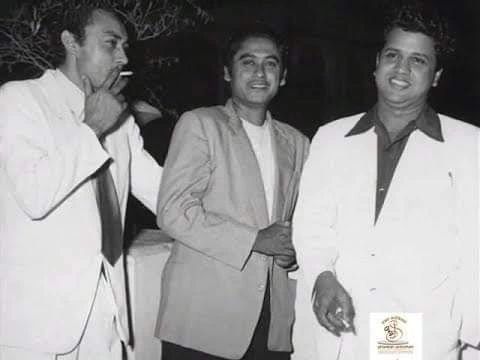
#KishoreKumar ( 4th August 1929 to 13th October 1987 Kishore Kumar is perhaps the most versatile artist of the Hindi film industry next to Raj Kapoor. Actor, singer, lyrist, music director, producer, director he was everytng He gave immence joy and happiness to film appreciating people with his comedy acting, serious produced pictures The maximum joy he gave was due to his singing .Not a trained singer but his rendering of all Navarasa songs have held the audience spellbound and in love with him and made their life happy and delightful. His yodelling gave new youthful zest to music. Nobody in Hindi before and after him did such yodelling. He won 8 Filmfare awards maximum by a singer (Lata stopped taking awards after her four). This is only for information as his abundance talent cannot be measured by awards His all songs are great and popular we can remember his 3 songs on Zindagi 1 #zindagieksafarhaisuhana 2 zindagi ka safar hai Ye kaisa safar 3 zindagi ke safar mai guzar jate hai Jo makam What range .Everyone loves #KK and this is his remembrance. #SJ played very significant role in establishing *KK as singer with Yodeling and As A Grade Actor This fulfilled his ambition and we got an alrounder Kishore Kumar Poor understanding of SJ and Kishore relationships by many needs nipping in bud. Statistics are as The article shows that till 1954/55 Kishore had sung nearly 100 + playback songs for all music directors except SJ without any impact or just 10% hits Thus he was not top playback singer The most important point is he had no films with SJ then. SJ Midas touch made all songs popular. His first success limited as singing star came from Naukari and Baap Re Baap. But biggest change came when in 1956 he got his own solo golden jubilee hit #NewDelhi A new star was born He knew he has reached where he wanted and stopped playback singing till he became old Surely after completing committed assignments Kishore association with SJ needs film by film discussions He gave Dev outside SD playback for SJ in Duniya #shankarjaikishan gave him his biggest ever hit in Andaz in 71 The relationship would have much prospered but... https://www.instagram.com/p/Cg13nnTvT6P/?igshid=NGJjMDIxMWI=
1 note
·
View note
Text
Aye Dil Mujhe Bata De Piano Notes | Bhai Bhai

Aye Dil Mujhe Bata De Piano Notes
Notes :- Aye dil mujhe bata de, Tu kispe aa gaya hai A3 D4 D4 D4D4 E4 F4#, D4 F4# F4# F4# F4# G4 E4 Woh kaun hai jo aakar, Khwaabon pe chha gaya hai E4 F4# C4# C4# E4 E4 F4# E4 F4# A4, E4 F4# G4 F4# E4 C4# E4 D4 Aye dil mujhe bata de, Tu kispe aa gaya hai A3 D4 D4 D4D4 E4 F4#, D4 F4# F4# F4# F4# G4 E4 Woh kaun hai jo aakar, Khwaabon pe chha gaya hai E4 F4# C4# C4# E4 E4 F4# E4 F4# A4, E4 F4# G4 F4# E4 C4# E4 D4 Music A3 F4# E4 D4, A3 F4# E4 D4, A3 F4# E4 D4 E4 A3 E4 D4 C4#, A3 E4 D4 C4#, A3 E4 D4 C4# D4 F4# G4 A4 G4 A4, B4 A4 G4 B4 A4 B4, C5# B4 A4 C5# B4 C5#, E5 D5 C5# D5 Masti bhara tarana, Kyun raat ga rahi hai A4 D5 D5 D5 D5 E5 C5#, A4 C5# C5# C5# C5# D5 B4 Aankhon mein neend aakar, Kyun door ja rahi hai G4 B4 B4 B4 B4 C5# B4 A4 G4, G4 A4 B4 B4 A4 G4 A4 Music A4 D5 C5#, B4 A4 C5# B4, A4 G4 B4 A4 B4 C5# D5 Masti bhara tarana, Kyun raat ga rahi hai A4 D5 D5 D5 D5 E5 C5#, A4 C5# C5# C5# C5# D5 B4 Aankhon mein neend aakar, Kyun door ja rahi hai G4 B4 B4 B4 B4 C5# B4 A4 G4, G4 A4 B4 B4 A4 G4 A4 Dil mein koyi sitamgar, Armaan jaga gaya hai A3 D4 D4 D4D4 E4 F4#, D4 F4# F4# F4# F4# G4 E4 Woh kaun hai jo aakar, Khwaabon pe chha gaya hai E4 F4# C4# C4# E4 E4 F4# E4 F4# A4, E4 F4# G4 F4# E4 C4# E4 D4 Aye dil mujhe bata de, Tu kispe aa gaya hai A3 D4 D4 D4D4 E4 F4#, D4 F4# F4# F4# F4# G4 E4 Woh kaun hai jo aakar, Khwaabon pe chha gaya hai E4 F4# C4# C4# E4 E4 F4# E4 F4# A4, E4 F4# G4 F4# E4 C4# E4 D4
About Song :-
"Aye Dil Mujhe Bata De" is a classic Hindi song from the 1956 Bollywood film "Bhai Bhai." The film was directed by M.V. Raman and starred Ashok Kumar, Kishore Kumar, and Nimmi in lead roles. The song is known for its melodious and romantic composition. Here is some information about the song "Aye Dil Mujhe Bata De" from "Bhai Bhai": Singer: Geeta Dutt Music: Madan Mohan Lyrics: Rajendra Krishan Summary of the Song: "Aye Dil Mujhe Bata De" is a melodious and romantic song that expresses the feelings of love and longing. The lyrics convey the desire of the heart to confess its love to the beloved. Geeta Dutt's soulful rendition adds depth and emotion to the song. The music, composed by Madan Mohan, is characterized by its gentle and melodious tune. Significance: The song "Aye Dil Mujhe Bata De" is considered a classic of its time and is remembered for its timeless melody. It contributed to the film's appeal and is often associated with the era of classic Hindi cinema. Music Video: The music video of "Aye Dil Mujhe Bata De" features Nimmi and Ashok Kumar and beautifully captures the romantic mood of the song. It showcases their on-screen chemistry and the emotions of love. "Aye Dil Mujhe Bata De" remains a cherished song among fans of vintage Bollywood music and is often included in compilations of classic Hindi film songs. It continues to be celebrated for its melodious composition and heartfelt lyrics. Read the full article
0 notes
Text
Guru Krishna Goswami
Guru Krishna Goswami Lyricist Gurukrishna Goswami (born 7 November 1934 - 6 May 2018) was a dialogue writer, poet and lyricist in the world of Oriya fiction. For more than half a century, he has composed about 2,000 songs for airwaves, television, films, and albums.
Short biography-- Gurukrishna was born on November 7, 1934 in Nuagaon, Mayurbhanj district. He grew up in his uncle's house. Aja had a love for music. He taught music to his grandson Guru Krishna. He learned music from Banchhanidhi Panda and Kshitish Chandra Maitra. Guru Krishna first wanted to be a singer. However, while studying in college in 1952, Shantanu started composing songs under the auspices of Mohapatra and has been accredited by Akashwani since 1956. He has been an acclaimed music director of Akashwani since 1986 and an acclaimed Hindi lyricist since 1993. He has contributed to a total of 30 Oriya short stories. He died of old age on May 6, 2018. His wife, Aarti Goswami, is also a vocalist.
Storytelling Life-- He started his life as a lyricist in 1959 by writing songs for the Oriya short story Ma. He first came to the fore by composing songs and dialogues for the film "Arundhati". Gurukrishna has contributed to more than 30 Oriya short stories as a lyricist and dialogue writer. Together with musician Shantanu Mohapatra, he was able to compose many popular songs in Oriya cinema. With the encouragement of Lata Mangeshkar, she learned Hindi and started writing songs. He has written 5 books of lyric poetry in Oriya and a lyric book in Hindi called "Hey Jagannath Tujhe Pranam".
1 note
·
View note